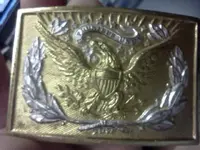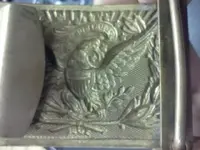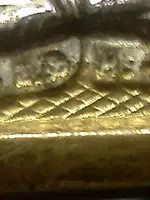screlichunter
Jr. Member
Hey Folks,
I recently came across a nice non-dug belt plate at a flea market ($8.00). It still has some nice gilt and has great patina on the back. I have been able to find some references to it on the web. The plate has "E & H." stamped in the ribbon under the eagle. This is indicative of the Evans & Hassall Company of Philadelphia. The general con-senses is that it is an Indian War Belt Plate. While I agree that the design is Indian War Like with the wide tongue. My question is that all research on the Evans & Hassall Company have them in business from 1859 - 1866. Does anyone have any more information about this company and this belt plate?
Thanks!
I recently came across a nice non-dug belt plate at a flea market ($8.00). It still has some nice gilt and has great patina on the back. I have been able to find some references to it on the web. The plate has "E & H." stamped in the ribbon under the eagle. This is indicative of the Evans & Hassall Company of Philadelphia. The general con-senses is that it is an Indian War Belt Plate. While I agree that the design is Indian War Like with the wide tongue. My question is that all research on the Evans & Hassall Company have them in business from 1859 - 1866. Does anyone have any more information about this company and this belt plate?
Thanks!






